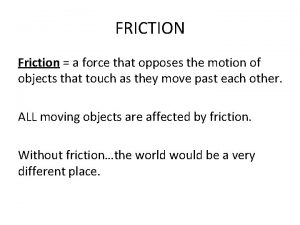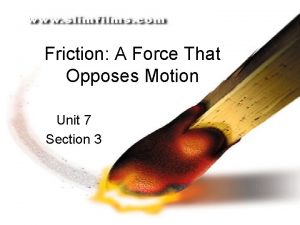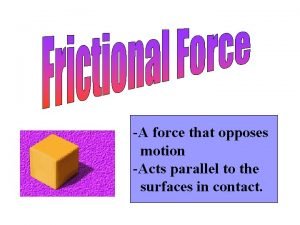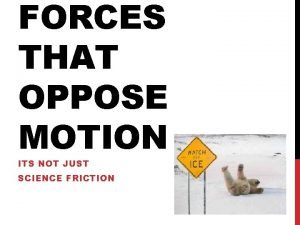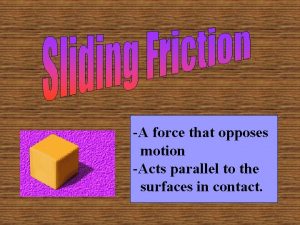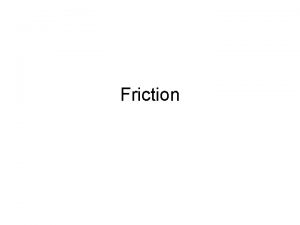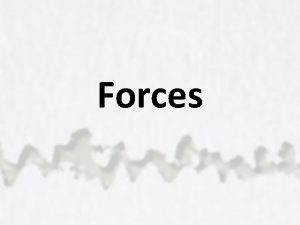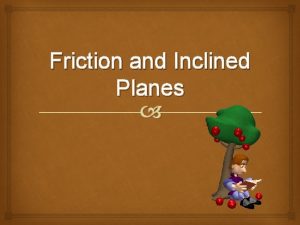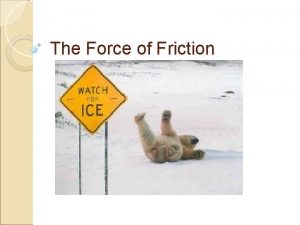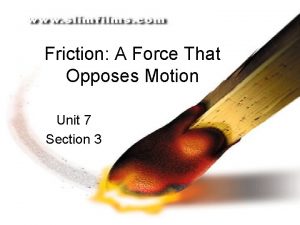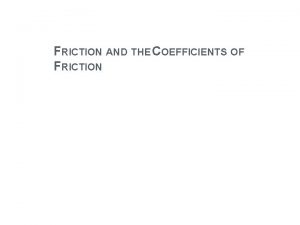Friction A Force That Opposes Motion Unit 7










- Slides: 10

Friction: A Force That Opposes Motion Unit 7 Section 3

I. Friction a. Friction is a force that opposes motion between two surfaces that are in contact. (two surfaces rubbing together). b. Friction can stop an object from moving, such as a ball rolling on the grass. The friction between the ball and the grass slows the ball and then stops it.

II. The Effect of Force on Friction a. The amount of friction depends on how much force is pushing the surfaces together. b. The heavier the objects, the more friction there is between them.

III. Surfaces and Friction a. Rough surfaces have greater friction (grip) than smooth surfaces. b. The rougher the surface, the stronger the grip. c. A grassy field would have more friction (grip) than an ice skating rink.

IV. Kinetic Friction a. KINETIC FRICTION is “moving friction. ” i. Example- moving a piece of furniture across a carpet.

V. Static Friction a. Static Friction is when a force is applied to an object, but the object does not move. b. Static means “not moving. ” i. An example would be trying to move your bed, but it doesn’t budge. Static friction has occurred.

Harmful Friction a. Harmful friction is when damage is done, such as: -when machine parts wear down -when you get holes in your socks -you skin your knees on the ground.

Helpful Friction a. Helpful friction is when friction is helpful to us. i. An example of helpful friction would be: -adding sand to make a car move in the snow -being able to walk without falling -using a pencil to write

Ways to Reduce Friction 1. Use lubricants, such as oil, grease, soap, wax, or water. 2. Use ball bearings or wheels to turn static friction into kinetic friction. 3. Make surfaces smoother, such as sanding wood or polishing a floor. (Slip and slide, taking off a ring)

Ways to Increase Friction 1. Make surfaces rougher, such as adding sand to an icy road, or wearing gloves to grip a baseball bat, using a rubber grip to open a jar. 2. Increase the force between the surfaces, such as pushing down harder when sanding wood.
 What force besides gravity acts on a projectile
What force besides gravity acts on a projectile A force that opposes motion of a projectile
A force that opposes motion of a projectile The force that opposes motion is
The force that opposes motion is Opposes motion
Opposes motion Air resistance
Air resistance A force that opposes motion
A force that opposes motion Non contact force definition
Non contact force definition Learning objectives of friction
Learning objectives of friction Phân độ lown ngoại tâm thu
Phân độ lown ngoại tâm thu Block xoang nhĩ độ 2 type 1
Block xoang nhĩ độ 2 type 1 Thơ thất ngôn tứ tuyệt đường luật
Thơ thất ngôn tứ tuyệt đường luật
